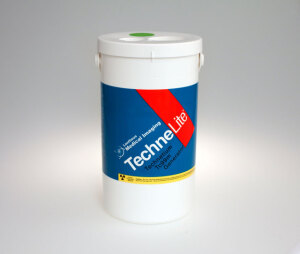by
Carol Ko, Staff Writer | January 10, 2013

Lantheus's low-enriched
uranium generator is the
first of its kind in the U.S.
On Wednesday, Lantheus Medical Imaging announced that the company has added a low-enriched uranium (LEU) generator to its list of nuclear imaging products — the first of its kind to be approved by the FDA in the U.S.
Using a low-enriched uranium-based substance called molybdenum-99 (moly-99), the generator creates technetium-99m (tc-99m), an isotope needed to operate nuclear imaging equipment used primarily for diagnostic heart scans.
Currently, the supply chain for moly-99 is convoluted and fraught with uncertainties. To obtain moly-99, the United States first exports high-enriched uranium (HEU) to nuclear reactors abroad. In turn, these foreign reactors use uranium targets to create moly-99 and ship it back to radiopharmacies in the United States. These domestic companies then use generators to turn moly-99 into tc-99m.



Ad Statistics
Times Displayed: 109208
Times Visited: 6638 MIT labs, experts in Multi-Vendor component level repair of: MRI Coils, RF amplifiers, Gradient Amplifiers Contrast Media Injectors. System repairs, sub-assembly repairs, component level repairs, refurbish/calibrate. info@mitlabsusa.com/+1 (305) 470-8013
Looking to bring the supply chain under greater domestic control, President Obama recently signed a bill into law that encourages domestic production of LEU moly-99 and eventually prohibits exportation of highly-enriched uranium from the U.S.
According to Bill Dawes, vice president of manufacturing and operations at Lantheus, having a domestic source of moly-99 eliminates a lot of transportation and decay-related barriers associated with these products that drive costs up. Dawes said, "The supply really helps to secure the supply chain by having additional producers and also helps to avoid cost and risk associated with bringing the material in from faraway places."
In addition to getting the supply chain under control, President Obama's bill also lays out a plan to phase out use of high-enriched uranium, which is essentially weapons grade material. Bill Dawes said, "In transitioning from HEU to LEU, which has a significant lower nuclear proliferation risk, we help the United States and also governments around the globe to meet their nuclear nonproliferation goals."
In light of the bill, the decision to add an LEU generator was also strategic. Dawes said, "There's been a move for the past several years to transition the global supply chain from an HEU-based moly chain to an LEU-based moly chain. Supply chains will transition to full LEU, certainly by the end of the decade if not sooner."
The United States has lacked a domestic supply of moly-99 since 1989. Though it once had reactors capable of producing the substance, those domestic sources ceased to exist for various reasons, including concerns around the investments required and tighter competition in the global marketplace.
Over the last 10 to 15 years, the North American market has been dominated by Nordian, a Canadian producer. Yet according to Dawes: "In the future we'll see their role decreasing as they look toward not being a supplier potentially in 2016, and other parties globally are now taking on a more expansive role."

